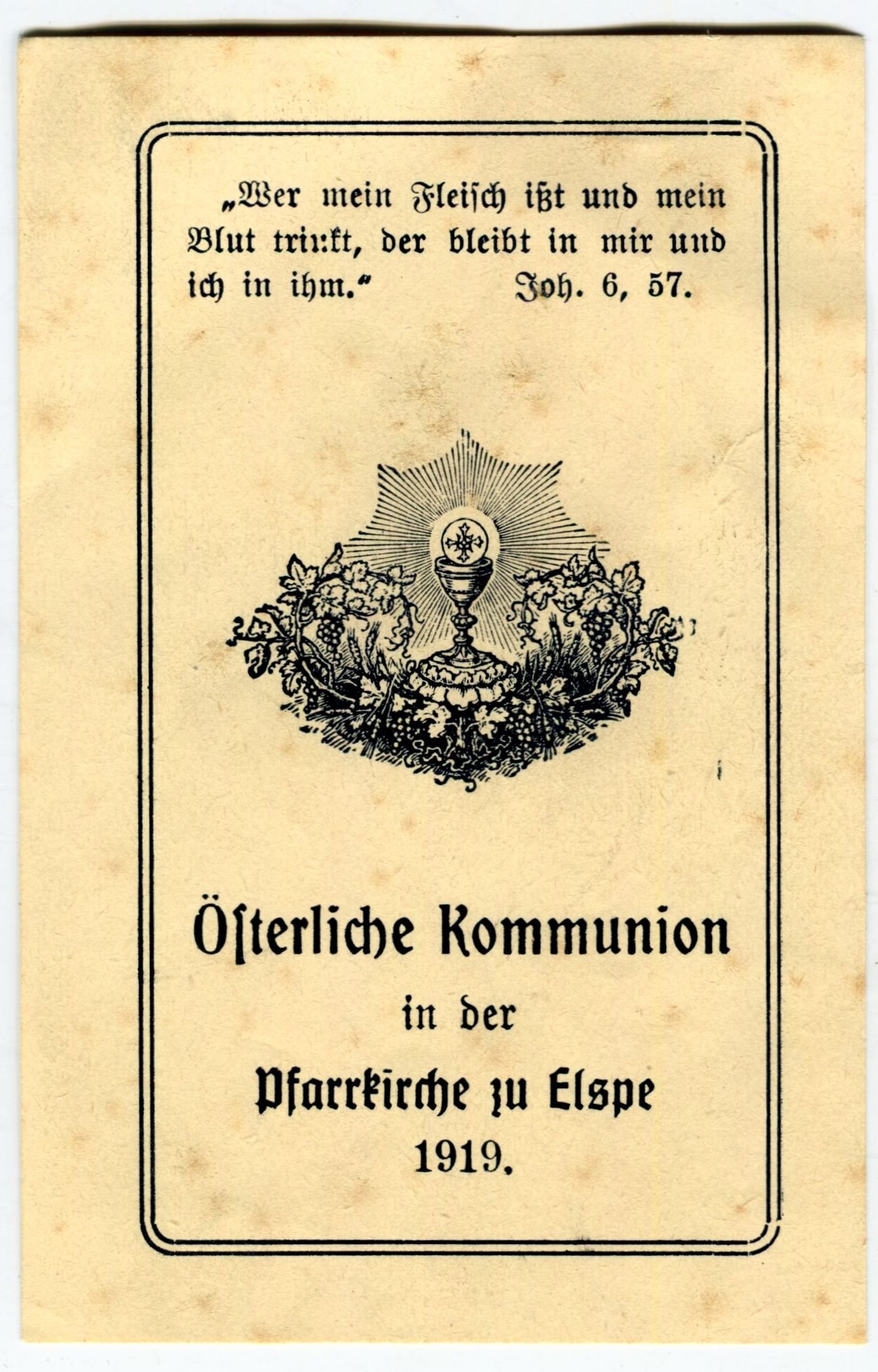Osterkommunionzettel, Elspe 1919.
Kleines Hochformat, einseitig schwarz bedruckt: "Österliche Kommunion in der Pfarrkirche zu Elspe 1919."
Binnenrahmung mit doppelter Linie, darin zentrales Motiv des Kelches mit einer Hostie im Strahlenkranz, versehen mit einem Wiederkreuz. Der Kelch steht auf einem Weinstock mit Trauben , Ranken und Blättern.
In der oberen Bildhälfte in Anlehnung an den liturgischen Text der Kommunion das Bibelzitat: "Wer mein Fleisch ißt und mein Blut trinkt, der bleibt in mir und ich in ihm." unter Angabe der Fundstelle.
en

